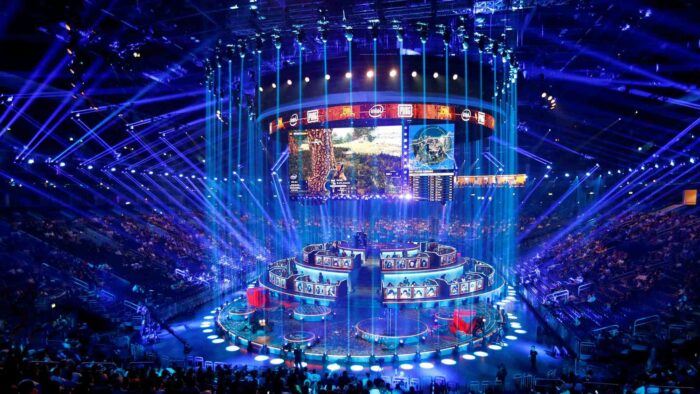In recent years, the esports industry has rapidly emerged as a significant field in global marketing, thanks to its highly interactive community culture and immense appeal. With a dedicated fan base and strong spending power, esports is no longer just a form of entertainment —- it has become a battleground for brands seeking to establish a presence. In this article, we will conduct a comprehensive insights monitoring of the current state of esports marketing, uncovering its economic ecosystem, communication innovations, and future potential.

1. Market Size and Development Trends
According to a report by Newzoo, the global esports market revenue in 2023 reached approximately 2.4 billion dollars and is projected to grow to 3 billion dollars by 2025, maintaining an annual growth rate of over 10%. This growth is fueled by diverse revenue streams, including media rights, sponsorships, ticket sales, merchandise, and fees from game publishers.
A HubSpot report highlights regional differences in the esports market. The Asia-Pacific region leads globally, with China and South Korea at the forefront. In 2023, China’s esports market generated 445 million dollars, making it a significant player worldwide. North America is known for its mature event operations, with market revenue reaching 465 million dollars in 2022. Major events like League of Legends attract numerous sponsors and audiences in the U.S. Meanwhile, Europe’s esports market is growing rapidly, particularly in Northern Europe and Germany, excelling in localized events and community engagement.
The global esports audience has also been expanding. In 2023, the total audience surpassed 500 million, with core enthusiasts making up 220 million. By 2025, the audience is expected to reach nearly 600 million, driven by the rise of mobile esports and the engagement of younger users in emerging markets.
PC-based esport, such as professional League of Legends tournaments, remain a major draw for audiences worldwide. The 2024 League of Legends World Championship S14 set new records, with peak viewership reaching nearly 7 million, and a 0,5 million increase from 2023. The event became the most-watched in esports history, with an average of 2 million viewers per match. Its opening ceremony also attracted 4.5 million concurrent viewers, setting a new record for esports events.
Besides PC games, mobile esports is flourishing thanks to widespread smartphone adoption and improved network infrastructure. This growth is particularly evident in emerging markets like Southeast Asia and Latin America. Regional tournaments and community-driven leagues are also thriving, encouraging more localized brand involvement.
2. The Economic Ecosystem of Esports
The esports industry’s revenues come from diverse sources and constitute a complex economic ecosystem. The key income sources include ticket sales, merchandise, streaming platforms, media rights, sponsorships, advertisements, in-game purchases, and developer fees.
The economic ecosystem of esports functions as a self-sustaining loop, with the following key players:
- Game Developers: Companies like Riot Games and Valve develop and maintain games. They set game rules, provide technical support, and establish incentives to guide the industry’s development.
- Event Organizers: Entities like ESL and Tencent Esports focus on organizing, promoting, and streaming events, ensuring high-quality tournaments and boosting brand value.
- Teams and Professional Players: As the core performers of esports events, players and teams earn income through tournament winnings, sponsorships, and streaming revenue. Their performance directly impacts audience loyalty and event popularity.
- Brands: Companies sponsor esports events, teams, or individual players to achieve efficient brand exposure. For example, Intel and Red Bull actively participate in the sponsorship to attract new consumers.
- Content Creators: Streamers and video creators on platforms like YouTube and Twitch expand the audience base by engaging users with entertaining and shareable content.
This collaborative relationship forms a closed-loop ecosystem: developers produce content, event organizers drive traffic, brands capitalize on sponsorships, and audiences power the entire system.
3. Innovations in Esports
The esports industry continues to evolve, embracing innovations that enhance its cultural and economic dynamics:
1. New Communication Channels
Social media platforms, especially video-based ones like TikTok and YouTube, play a crucial role in esports. Key moments from tournaments are often edited into short, engaging clips that attract a wider audience, particularly younger viewers. Players and teams also interact with fans on these platforms, fostering loyalty and engagement.
2. Growth of Mobile Esports
With the widespread adoption of mobile devices and improved network infrastructure, mobile esports tournaments, such as Honor of Kings KPL, have gained significant traction, especially in Southeast Asia and China. Additionally, traditional PC games are adapting to mobile platforms. For instance, League of Legends launched Wild Rift in 2020, leveraging its established fan base and tournament expertise to grow mobile esports.
3. Cross-Industry Collaborations
Esports is increasingly integrating with film, music, fashion, and other industries. For example, the annual theme song for the League of Legends World Championship generates widespread discussion and cultural impact. The Honor of Kings league has also collaborated with Coca-Cola to release co-branded products, broadening its audience reach and influence.

In summary, the esports industry is a fast-growing field with a rich ecosystem and immense potential. For marketers, it offers unique opportunities to leverage its innovative and diverse attributes to achieve greater competitiveness and influence in the future.

